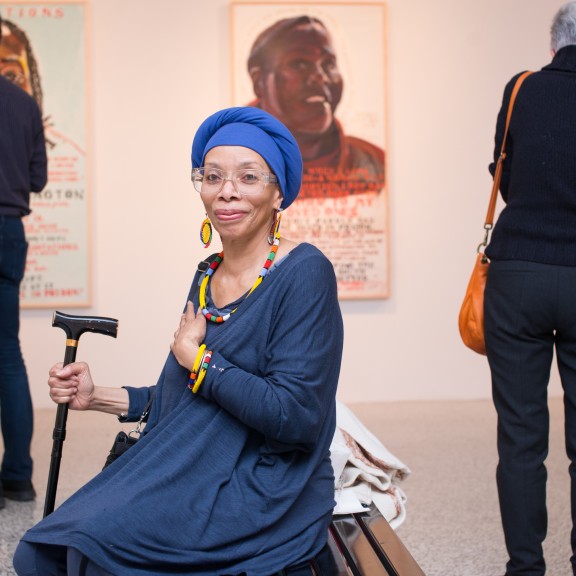What Makes a Leeway Artist or Cultural Producer?
Funding women and trans artists and cultural producers creating social change
What Makes a Leeway Artist or Cultural Producer?
Accomplished
The artists takes ownership of their practice and knows what, how, and whom they wish to engage; the work is expressed as clear and confident.
Bridge builders
Artists and cultural producers who:
May not be originally of the community they are working in but share an authentic and reciprocal connection to the culture and the work, and/or
Serve as ambassadors to other communities as a way to build alliances within larger movements
These artists are always accountable to the communities/audiences they work with.
Connected
These practitioners are part of a self-defined community and connected to something outside of the studio and themselves. Through their practice they demonstrate connections and relationships within that community, often making connections to other aligned communities that are based in geography (neighborhood, national, or global) or identity.
Impactful
The social change impact of the artist’s work translates across discipline and audience. The audience does not need to have special knowledge or experience in the artist’s discipline to understand the work or have a sense of its potential or impact.
Innovators and risk takers
The work is innovative and inquisitive, challenging norms that include existing methods and ways of working. The artist experiments and takes risks in their exploration of art for social change by:
- Expanding and interrogating technique
- Exploring and working with innovative materials or in an unorthodox, unrecognized new or emerging discipline/practice
- Creating hybrid forms
Investigative
Whether the artist is emerging or experienced, there is a sense of digging deeply into their practice as an open-ended exploration of the possibilities of what is present.
Purposeful and intentional
There is clear intention and analysis grounding the artist’s practice and purpose that they translate through the work.
Provocative
The work can challenge audiences or create a sense of tension; its impact is often rooted in challenging perceptions and the status quo related to issues of race, class, gender self-determination, or ability, among others.
Thoughtful and insightful
The work is grounded in a social change analysis and is an articulation of that analysis that can take many forms — spoken/written, visual, musical, movement-based, etc.
Underserved, under-acknowledged, and/or under-engaged
The practitioners have not traditionally received support for their work and may fall at the intersection of identities, such as people of color, immigrants, queer people, people facing poverty, and/or trans* folks.
This may also include practitioners who:
- Are making a significant contribution to the field and have not received recognition in line with their contribution
- Do not easily fit within traditional definitions of “artist” but work in creative ways and use “art forms” to create significant impact
- Are identified or perceived as “outsiders,” artists and cultural producers not usually engaged in formal or mainstream societal structures
Visionary
Through the practice they connect us to their imagination, creative vision, and intention, helping us see art and culture in radical new ways — unexpected and previously undefined.

Art for social change is art with a vision and an intentional analysis.
It is an artistic or creative cultural practice that may operate in traditional or nontraditional mediums, modes, or disciplines.
Art with a vision impacts people in many ways. It can:
- Raise consciousness
- Alter how we think about ourselves, our society, or our culture
- Create a vision of a more just world
- Be a tool or strategy for organizing and movement building
- Preserve or reclaim traditional cultural practices using your artistic practice as a form of resistance or empowerment
- Create space for expression and build a sense of community
- Challenge racism, classism, sexism, homophobia, transphobia, ageism, ableism, or other oppressions
- Question mainstream culture and beliefs
- Shift or transform the perception of power and/or privilege and the dynamics associated with justice, equality, and/or accountability
- Value healing justice practices focused on strengthening communities, not just individuals
- Engage and utilize a reciprocal process — where there is teaching and learning simultaneously and the consent for engagement is mutual, as is the benefit for yourself as an artist and the community you are engaging
